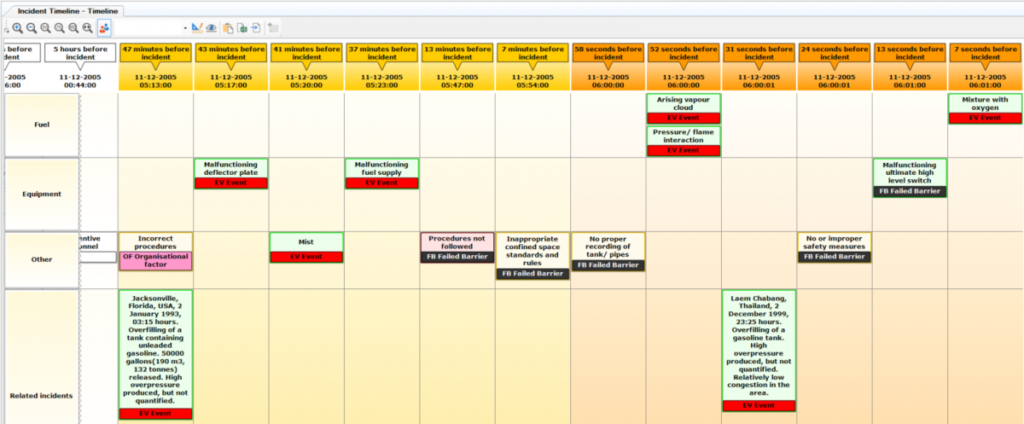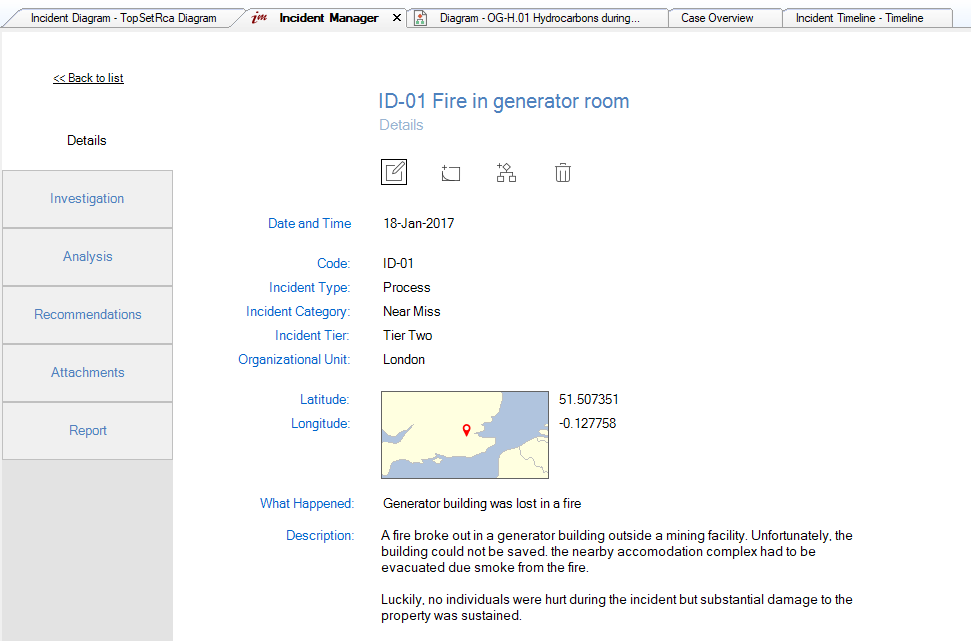Home > HSE Training > Off-the-shelf training > Incident XP
Incident analysis software.
Take your investigations even further with IncidentXP

An overview of all incident reports to make your work easier.
The platform supports 5 globally accepted incident analysis methods, such as DNV GL and Kelvin TOP-SET.
Plotting the results of an incident analysis on a bow-tie diagram ensures organisational learning.
Aegide International is an official Wolters Kluwer partner and reseller of the IncidentXP solution.
IncidentXP is incident analysis software that enables you to use the most widespread and widely used incident analysis methods in the world:
BSCAT links the barrier-based bow-tie concept to DNV GL's incident investigation concept: the Systematic Cause Analysis Technique (SCAT). SCAT provides a framework with predefined categories of direct and root causes that have proven to be important contributors to incidents in several industries. By applying this SCAT technique to a barrier, it is possible to assess barrier performance during an incident and propose specific improvement actions to address the main causes of failure. The BSCAT concept supports the investigation of complex incidents characterised by a variety of events that have gone wrong.
The Tripod Beta method is a means of conducting a specified incident analysis for high-risk and complex incidents, as it is a very comprehensive and detailed method. A Tripod tree is constructed in three stages. The first step is to ask the question: "What happened? All the events that occurred during the incident are listed as a chain of events. The next step is to identify the obstacles that prevented this chain of events from being stopped. The question asked at this stage is: "How did it happen? When all the events and missing barriers have been identified, the reason for the failure of these barriers is analysed. The final question for this stage is: "Why did this happen?". For each of the failed barriers, a causal path is identified.
BFA is a pragmatic and versatile method of incident analysis. It has no affiliation with any particular regulatory body and therefore contains no predefined lists, unlike BSCAT. BFA is a way of structuring an incident and categorising the elements of the diagram according to the incident analysis taxonomy. The structure provides events, barriers and causal paths. Events are used to describe a causal sequence of undesirable events. This means that each event causes the next event. It is also possible to have parallel events which, in combination, cause the next event.
RCA is a simple incident analysis technique. It starts with an incident and works down the chain of events that led to that incident until the root causes are identified. This method is widely used throughout the world and the idea of looking for the root cause is also present in all the other incident analysis methods.
Kelvin's TOP-SET® root cause analysis method is an incident investigation methodology that follows all known best practices in the field. The method is based on six elements: technology, organisation, people, similar events, environment and time. Not only the planning of the investigation, but also the facts gathered during the investigation are classified by these elements. The TOP-SET® methodology starts with an initial incident report to define the scope of the incident. After this, the method essentially follows three main stages: planning, investigation and analysis.
Some incidents can contain an overwhelming amount of information. The timeline provides a diagram that structures an incident investigation and creates an overview in chronological order, making it easier to manage the investigation.

The chronology in IncidentXP is a grid made up of time on the x-axis and actors on the y-axis. Actors are the main components of an incident. A person, a piece of equipment, a process, a management system or any other element that logically groups results can be an actor on the y-axis.
Once the facts have been classified in time and by actor, they can be assigned a confidence level and a category. The confidence level classifies the facts according to their degree of confidence. The category indicates where they are likely to appear in the analysis of the incident that follows the fact-finding phase.

In IncidentXP, a user can select one or more methods for analysing an incident and, once selected, the analysis can begin. From here, the user can choose to build the diagram from the tree structure, as is also normally done in BowTieXP. Another option is to use the incident management functionality, which will guide the user through all the stages of the incident analysis. This easy-to-follow process ensures that the investigation process is complete and that no step has been overlooked. At the end of the analysis process, a standardised report can be generated. This report can be based on a business model that meets the company's standards.